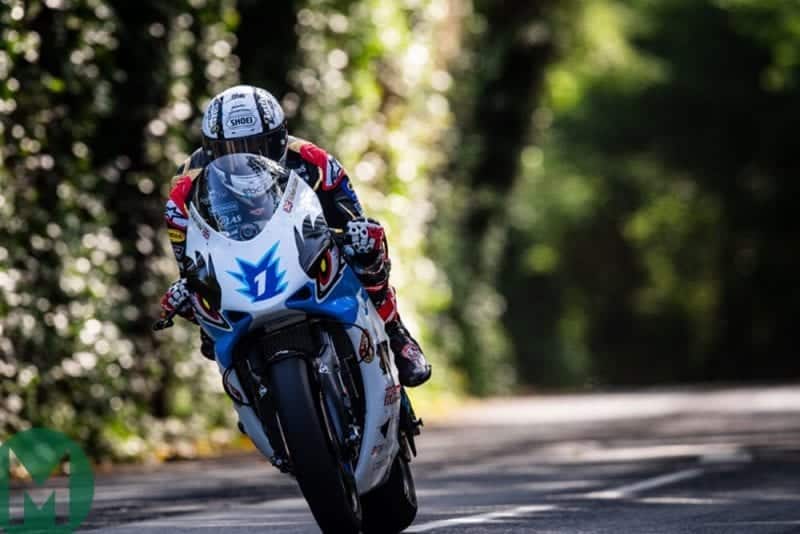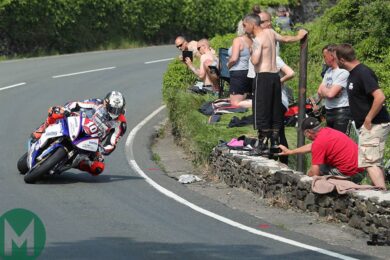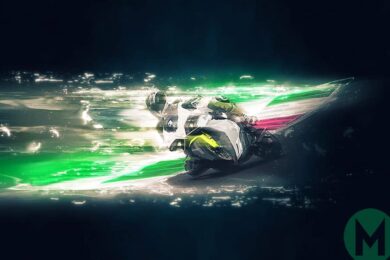How does the Mugen compare to the other bikes you ride at the TT?
It’s got phenomenal power, so it feels as strong as my S1000RR Superstock bike. Coming out of slow corners, like Ramsey Hairpin, it’s not as good, but once you’re getting up towards 150mph it feels like the BMW. It definitely motors on.
What about top speed?
Me and John [McGuinness, Rutter’s Mugen team-mate] went through the speed trap at the end of Sulby straight at 176mph, but it should’ve been more because we had so much power left at the end of the race. The Mugen technicians didn’t have enough data from practice to work out exactly how much battery power they could put into the motor. They were saying it could’ve been 180mph on Sulby.
I opened it up quick as I could coming out of Quarter Bridge and it spun the rear tyre
Electric bikes give instant torque, so how does that change your throttle technique?
That’s the weird thing. At the start of this year’s race I wanted to get away from John, so I opened it up quick as I could coming out of Quarter Bridge and it spun the rear tyre, so it can catch you out. But the power is so linear that it seems to get itself out of trouble; it almost feels like it’s got traction control.
What’s it like having no gears – does your left foot get a bit itchy?
That’s the other big thing you notice – no gear-changing – but the Mugen is great because you can adjust how much ‘engine-braking’ you get going into corners. I always want a bike to pull me into the corners with a lot of engine-braking, whereas John wants his bike to be more like a two-stroke, with no engine-braking. They can dial-in the exact kind of engine-braking you want: how much you want and when and where you want it; so I just tell them what I want.





